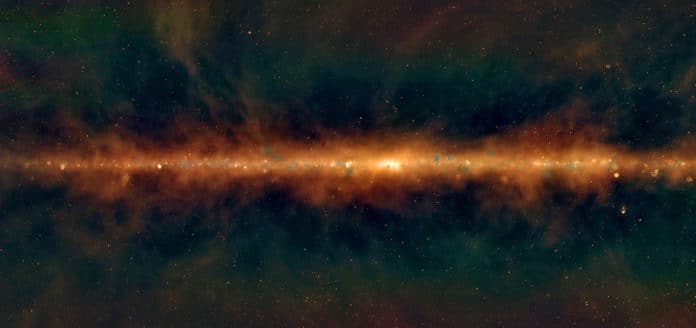Using the Murchison Widefield Array telescope in Australia, scientists have recently captured a new view of the center of the milky way. The image shows what our galaxy would look like if human eyes could see radio waves.
Astrophysicist Natasha Hurley-Walker of the International Centre for Radio Astronomy Research (ICRAR) said, “This new view captures low-frequency radio emission from our galaxy, looking both in fine detail and at larger structures. Our images are looking directly at the middle of the Milky Way, towards a region astronomers call the Galactic Centre.”
In addition to providing a new view of the galaxy, scientists also discovered the remnants of 27 massive stars that exploded in supernovae at the end of their lives. As scientists noted, these stars must be of eight or more times more massive than our sun before their dramatic destruction thousands of years ago.
However, many remnants have been discovered earlier, but the MWA can potentially capture remnants that are older and further away than the ones we already know about.

Dr. Hurley-Walker said, “one of the newly discovered supernova remnants lies in such an empty region of space, far out of the plane of our galaxy, and so despite being quite young, is also very faint. It’s the remains of a star that died less than 9,000 years ago, meaning the explosion could have been visible to Indigenous people across Australia at that time.”
Associate Professor Duane Hamacher from the University of Melbourne, said, “some Aboriginal traditions do describe bright new stars appearing in the sky, but we don’t know of any definitive traditions that describe this particular event. However, now that we know when and where this supernova appeared in the sky, we can collaborate with Indigenous elders to see if any of their traditions describe this cosmic event. If any exist, it would be fascinating.”
Dr. Hurley-Walker reported, “two of the supernova remnants discovered are quite unusual ‘orphans,’ found in a region of the sky where there are no massive stars, which means future searches across other such regions might be more successful than astronomers expected. Other supernova remnants discovered in the research are very old. This is exciting for us because it’s hard to find supernova remnants in this phase of life—they allow us to look further back in time in the Milky Way.”
References:
- Candidate radio supernova remnants observed by the GLEAM survey over 345° < l < 60°, 180° < l < 240°
